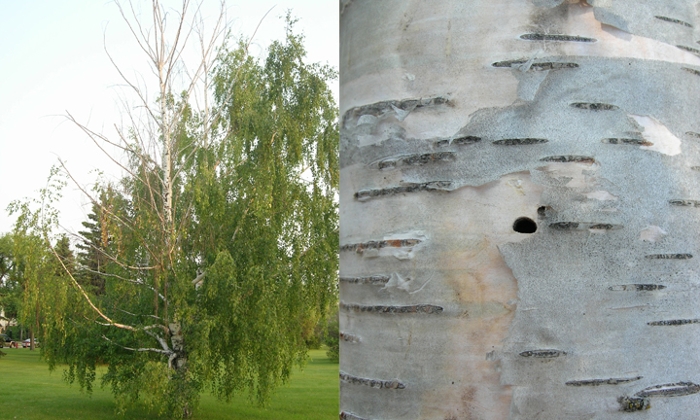Agriflus
Stressed birch trees are extremely susceptible to birch borer; healthy trees tend to resist these infestations. One of the most important factors in a birch tree's health is sufficient watering. Birch trees are naturally found in very moist, well drained soil that is covered with a layer of decaying, nutrient rich leaves. Many areas on the prairies simply do not have enough available water in the soil to provide sufficient water for the trees and therefore trees are not likely to do well in areas subject to drought, or urban trees that are not watered regularly. In the spring a birch tree may utilize hundreds of gallons of water a day. If the water reserve is not in the soil, the tree is put under a great deal of stress. If this lack of water persists year after year, the tree is almost certain to be targeted by the bronze birch borer.
Due to the birch's high water use in the spring, fall and spring pruning is not recommended for birch trees. The wounds resulting from improperly timed pruning will bleed sap. This sap bleeding can be so great that even if there is sufficient soil water, branches higher on the tree will beThe best prevention is to keep birch trees as healthy as possible:
- Birch trees should be watered once a week for the months of May, June, July and most of August. The soil should be moistened to a depth of 24 to 36 inches. Watering during September and early October is generally not recommended to ensure the tree reaches full dormancy for the winter. One final watering in late fall, just before the ground freezes will ensure adequate moisture for early spring.
- The best way to water a birch tree is to place a soaker hose upside down at the tree's drip line (the outside edge of the leaf canopy) during the spring and summer and water at a rate where runoff does not occur.
Symptoms:
- Die-back at the top of the tree is usually the first sign of infestation.
- Ridging or ripples on the birches thin bark are an indicator of galleries.
- Look for D-shaped entry holes on the bark.
Control:
Once a birch tree is infested by the bronze birch borer, control is very difficult and the chances for a cure are very slim. It is possible to remove dead or infested branches and trunks. Wood should be removed well below the last sign of a borer. Trees with a great deal of dieback from the bronze birch borer should be removed.
There are no regulations regarding the disposal of wood from infested trees, but as the larvae over-winter underneath the bark, firewood can serve as a source of infestation for other birch trees. A good


